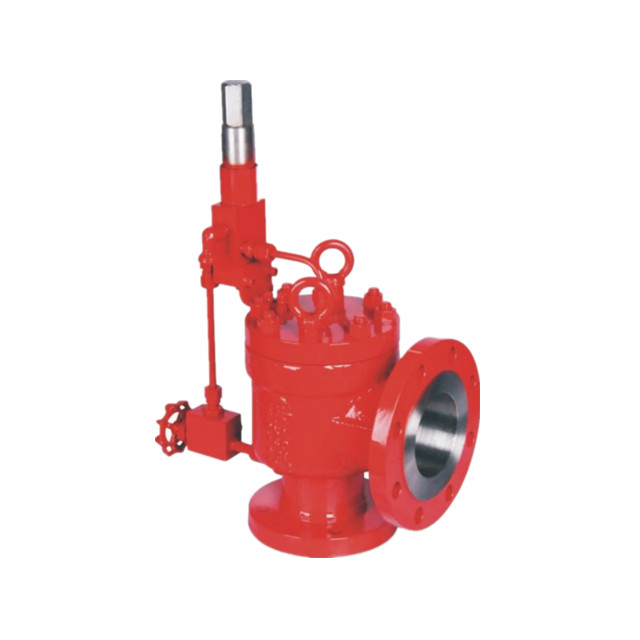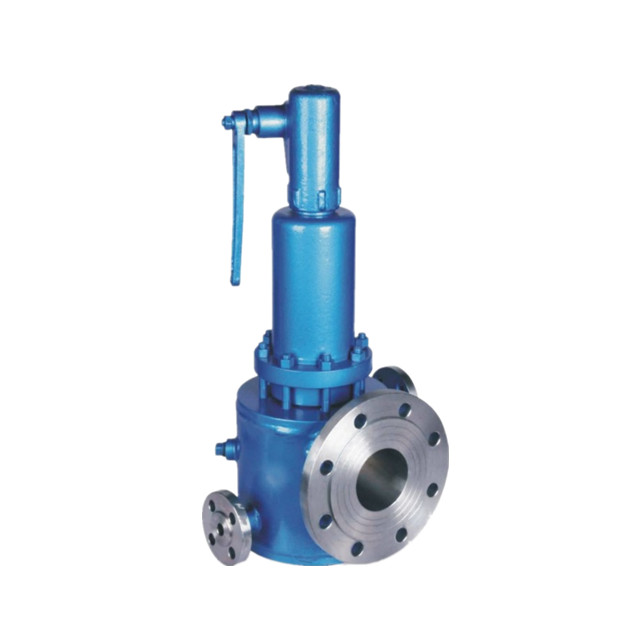Inhaltsverzeichnis
UmschaltenRelief valves and safety valves are both important for preventing system failures, but they differ in design and function. Learn about the key differences between the two in this comprehensive guide.
Wenn der Druck in einem unter Druck stehenden System ansteigt, steigt der Druck im Entlastungsventil und das Sicherheits- oder Steuerventil öffnet. Obwohl beide nützlich sind, um Systemausfälle zu verhindern, unterscheiden sie sich in Design und Funktion. Entlastungsventile sind so konzipiert, dass sie den Druck proportional zum Druckanstieg über den Öffnungsdruck entlasten und werden im Allgemeinen in Systemen mit kompressiblen Flüssigkeiten verwendet. Ob Entlastungsventile in einer Anlage aus Sicherheitsgründen oder für Notfälle eingesetzt werden, hängt von der Druckart und dem Betrieb der Anlage ab.
Während Sicherheitsventile Da sie die Ausrüstung schützen und ein Überdruckventil den Druck entlastet, sind die beiden Typen nicht gleich. Ein Sicherheitsventil öffnet, wenn der Druck drei Prozent über seinem Sollwert liegt, während ein Überdruckventil öffnet, wenn der Druck 10 Prozent höher ist. Der Sollwert eines Sicherheitsventils wird oft als Arbeitsdruck bezeichnet, während ein Überdruckventil im Allgemeinen auf einen um 10 Prozent höheren Wert eingestellt wird.
Was ist ein Entlastungsventil?
Das Überdruckventil besteht je nach Verwendungszweck aus mehreren Materialien. Edelstahl und Kohlenstoffstahl werden zur Herstellung verwendet interne Federn. Messing ist die kostengünstigste Option, während Kunststoff und Aluminium häufig zur Gewichts- und Kostenreduzierung verwendet werden. Überdruckventile aus Edelstahl werden in Anwendungen mit korrosiven Flüssigkeiten eingesetzt.
Auch wenn Sie sich der vielen Anwendungen eines Überdruckventils vielleicht nicht bewusst sind, sind Sie wahrscheinlich schon einmal in einer druckempfindlichen Umgebung auf eines gestoßen. Diese Ventile regulieren den Durchfluss von unter Druck stehendem Gas oder Flüssigkeit, um gefährliche Ablagerungen zu vermeiden. Wann immer sie verwendet werden, sind sie für die Druckregulierung in einem Druckbehälter unerlässlich. Sie sorgen auch dafür, dass alles reibungslos läuft. Es ist wichtig, sich daran zu erinnern, dass diese Ventile entscheidend sind, um Schäden an der Ausrüstung zu vermeiden.
Types of Relief Valve
Direct Spring-Loaded Relief Valve
Direct spring-loaded relief valves are common in various industries.
They utilize a spring force to keep the valve closed, and when the system pressure exceeds the set point, the valve opens, releasing excess pressure.
These valves are known for their simplicity, reliability, and ease of maintenance.
Pilot-Operated Relief Valve
Pilot-operated relief valves use a pilot valve and a main valve to control system pressure.
The pilot valve monitors pressure and, when it exceeds the set point, opens, allowing the main valve to relieve pressure.
These valves are suitable for applications with fluctuating pressures and provide precise control.
Balanced Relief Valve
Balanced relief valves handle high pressures efficiently by incorporating a balanced bellows or similar mechanism to counteract system pressure.
This design ensures accurate pressure control and is commonly used in applications requiring consistent pressure relief.
Pressure Vacuum Relief Valve
Pressure vacuum relief valves maintain balanced pressure in a system, protecting tanks or vessels from excessive pressure or vacuum conditions.
These valves open to relieve pressure or allow air into the system, preventing vacuum conditions and ensuring container integrity.
Power-Operated Relief Valve
Power-operated relief valves use an external power source, such as an electric motor or hydraulic system, for precise and automated pressure relief.
They are suitable for applications requiring advanced control, where manual operation is impractical.
Understanding the characteristics and applications of each type is crucial for selecting the most appropriate relief valve, ensuring safety and operational efficiency.
Pros and Cons of Relief Valves
Vorteile
Pressure Regulation
Relief valves effectively regulate pressure, ensuring safe system operation within specified limits.
Safety Assurance
They prevent overpressure scenarios, safeguarding equipment, pipelines, and vessels from potential damage.
Vielseitigkeit
Relief valves come in various types, offering versatility to meet specific requirements in different applications and industries.
Ease of Maintenance
Certain types, like direct spring-loaded valves, are simple to install and maintain.
Continuous Monitoring
Pilot-operated valves provide continuous pressure monitoring, making real-time adjustments for optimal pressure levels.
Balanced Design
Balanced relief valves offer accurate and stable pressure control in high-pressure systems.
Prevents Vacuum Conditions
Pressure vacuum relief valves protect against excessive pressure and prevent vacuum conditions in containers, ensuring structural integrity.
Power Operation
Power-operated relief valves provide precise and automated control for advanced pressure management.
Nachteile
Initial Cost
High-quality relief valves, especially advanced ones, may have a higher initial cost.
Maintenance Complexity
Some valves with complex designs may require intricate maintenance procedures, potentially increasing downtime.
Limited Accuracy
Achieving extremely precise pressure control can be challenging in certain situations.
Space Requirements
Power-operated valves may require additional space for power sources and control mechanisms.
Dependency on External Power
Power-operated valves depend on an external power source, limiting use during power failures or in remote locations.
Potential for Leakage
Minor leakage may occur in some relief valves, which can be a concern in specific applications.
Application Specificity
Choosing the right relief valve requires careful consideration of the application to avoid inadequate pressure relief.
Understanding both the advantages and drawbacks of relief valves is essential for making informed decisions when selecting the most suitable valve for a particular system or process.
Was ist ein Sicherheitsventil?
Wenn Sie auf der Suche nach einem neuen Sicherheitsventil sind, haben Sie wahrscheinlich einige Fragen im Kopf. Erstens, was ist ein Sicherheitsventil? Und warum sollten Sie sich um sie kümmern? Lass es uns herausfinden. Sicherheitsventile sind wichtige Komponenten aller Arten von Gas- und Flüssigkeitssystemen. Sie helfen, Unfälle zu vermeiden und Ihr Eigentum vor Schäden zu schützen. Dieser Artikel erklärt, warum Sicherheitsventile so wichtig sind. Lass uns genauer hinschauen.
Sicherheitsventile können unterteilt werden in: drei Typen: direkt wirkend, indirekt wirkend und multifunktional. Direktwirkende Sicherheitsventile sind die gebräuchlichste Bauart. Sie sind häufig verwendet in Niederdruck- und ungefährliche Anwendungen. Die indirekt wirkenden Ventile sind nicht nach ASME-Standards getestet. Sie gelten auch als Nicht-Code-Ventile. Trotz ihres Namens sind Sicherheitsventile nicht ASME-zertifiziert. Die Hauptfunktion von Sicherheitsventilen besteht darin, Sie und Ihre Mitarbeiter zu schützen.
Eine andere Art von Sicherheitsventil ist ein Entlastungsventil. Es verhindert den Flüssigkeitsfluss, der sonst das Rohr reißen würde. Es wird in Sackgassen installiert, was problematisch sein kann, wie z. B. in einem Dampfkessel. Es schließt automatisch, wenn es ausgelöst wird, und verhindert, dass Material in das System eindringt. Wenn jedoch im angeschlossenen Bereich ein Problem auftritt, öffnet sich das Sicherheitsventil und verhindert den Durchfluss von Gas oder Flüssigkeit.
Types of Safety Valves
Spring-Loaded Safety Valves
Spring-loaded safety valves are one of the most common types, featuring a spring mechanism that exerts force on the valve disc to keep it closed.
When the system pressure exceeds the set limit, the spring force is overcome, causing the valve to open and release excess pressure.
These valves are widely used for various applications, including steam boilers and pressure vessels.
Pilot-Operated Safety Valves
Pilot-operated safety valves utilize a two-step process for pressure relief.
A smaller pilot valve controls the larger main valve.
When system pressure surpasses the set limit, the pilot valve opens, causing a pressure drop that triggers the main valve to open fully.
These valves are suitable for high-pressure systems and offer precise control.
Lever Safety Valves
Lever safety valves employ a lever mechanism for pressure relief.
The lever is attached to the valve disc, and when the force exerted by the system pressure overcomes the counteracting force of the lever, the valve opens.
These valves are commonly used in low-pressure applications, and the set pressure can be adjusted by changing the position of the weight on the lever.
Diaphragm Safety Valves
Diaphragm safety valves use a flexible diaphragm to control the valve opening.
When pressure exceeds the set limit, the diaphragm flexes, allowing the valve to open and release pressure.
These valves are suitable for applications where a soft-seated valve is required to prevent damage to the seating surfaces.
Balanced Safety Valves
Balanced safety valves are designed to minimize the effect of back pressure on the valve’s performance.
They feature additional components that balance the pressure on both sides of the valve, ensuring accurate pressure relief even in situations with varying back pressure.
These valves are commonly used in processes with fluctuating pressure conditions.
Dome-Loaded Safety Valves
Dome-loaded safety valves utilize a dome-shaped chamber filled with system pressure to keep the valve closed.
When the pressure exceeds the set limit, the dome pressure is overcome, allowing the valve to open and release pressure.
These valves are known for their rapid response and are suitable for high-pressure applications.
Understanding the characteristics and applications of different safety valve types is crucial for selecting the most appropriate valve for specific industrial processes and ensuring the safety of pressure vessels and systems.
Pros and Cons of Safety Valves
Pros of Safety Valves
Reliable Pressure Relief: Safety valves provide a reliable means of relieving excess pressure in a system, preventing potential catastrophic failures due to overpressure.
Vielseitigkeit: Safety valves are versatile and can be used in various applications, from steam boilers and pressure vessels to industrial processes, ensuring protection across different scenarios.
Adjustability: Many safety valves allow for the adjustment of the set pressure, providing flexibility to meet the specific pressure relief requirements of different systems.
Rapid Response: Safety valves, especially dome-loaded and spring-loaded types, can respond quickly to changes in pressure, ensuring timely relief and preventing damage to equipment.
Wide Range of Types: The diverse types of safety valves cater to different pressure ranges, applications, and environmental conditions, allowing for customized solutions based on specific needs.
Cons of Safety Valves
Maintenance Requirements: Safety valves need regular maintenance to ensure proper functioning.
Over time, deposits, corrosion, or wear can affect the valve’s performance, necessitating periodic inspections and repairs.
Limited Precision: Some safety valves may have limitations in precision when it comes to pressure settings.
Achieving extremely precise pressure relief may require more sophisticated and potentially expensive valve types.
Risk of Leakage: In certain situations, safety valves may experience leakage, especially during their initial opening or closing stages. This can lead to a gradual loss of system pressure.
Complexity in Pilot-Operated Valves: Pilot-operated safety valves, while offering precise control, can be more complex in design and installation, requiring careful setup and maintenance.
Initial Cost: Depending on the type and features, safety valves may have higher initial costs compared to simpler pressure relief devices.
However, this cost is often justified by the level of protection they provide.
Was ist der Unterschied zwischen Entlastungsventil und Sicherheitsventil?
Es gibt einen wesentlichen Unterschied zwischen einem Sicherheitsventil und einem Entlastungsstromregelventil. Ein Entlastungsstromregelventil öffnet nur, wenn der Druck unter dem Sollwert liegt, der im Allgemeinen unter dem Arbeitsdruckniveau des Systems liegt. Der Sollwert wird durch die Materialien und den Betrieb des Systems bestimmt. In den meisten Fällen öffnet ein Sicherheitsventil einen kleinen Betrag, bevor es seinen Sollwert erreicht, während ein Entlastungs-Durchflussregelventil erst öffnet, wenn der Druck größer als der Sollwert ist.
Ein Überdruckventil ist ein Gerät, das den Druck aus einem System schrittweise entlastet. Es öffnet proportional zum Druckanstieg und schließt dann wieder. Es wird bei Systemen eingesetzt, die unter Druck stehen, um zu verhindern, dass das System explodiert oder platzt. Ein Sicherheits-Durchflussregelventil soll verhindern, dass das System explodiert, was eine gefährliche Situation darstellt. Ein Sicherheitsventil kann auch genutzt werden in einem Prozess, an dem Flüssigkeiten beteiligt sind, beispielsweise in einem Automotor.
Das Drucksicherheitsventil öffnet, wenn der Druck im System einen vorgegebenen Wert erreicht. Steigt der Druck im System über den eingestellten Druck, öffnet sich das Ventil und die austretende Flüssigkeit verringert den Druck. Wenn der Druck nachlässt, schließt sich die Scheibe und dichtet das Gerät ab.
About Xintai: Your Trusted Valve Manufacturer
Founded in 1998, XINTAI-Ventilgruppe is a leading valve manufacturer seamlessly integrating R&D, casting, production, and sales.
Located in Wenzhou’s Longwan Konggang New District, the group operates from four bases with eight advanced casting lines in a 32,000 sqm workshop.
With annual production exceeding 270,000 valves, XINTAI has been a major player in Wenzhou’s casting valve industry since 1998.
ISO9001, CE, OHSAS18001, and API certifications reflect their commitment to quality.
Specializing in high-pressure systems, XINTAI offers a range of valves, from control to hydraulic, establishing itself globally with three offices and trusted custom valve solutions.












